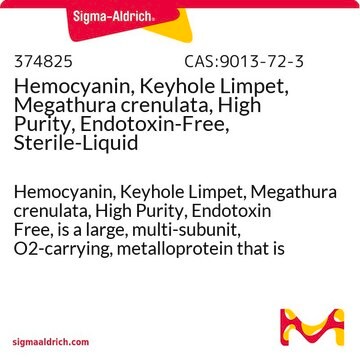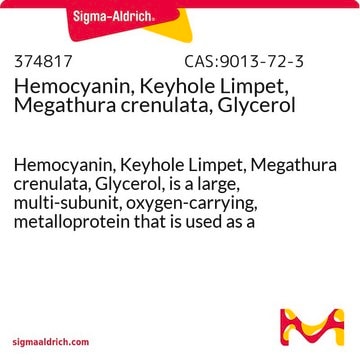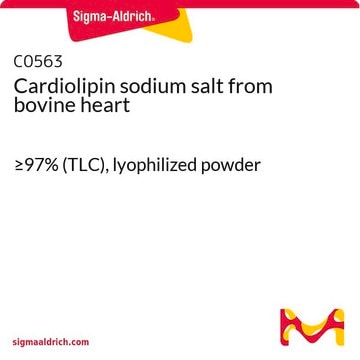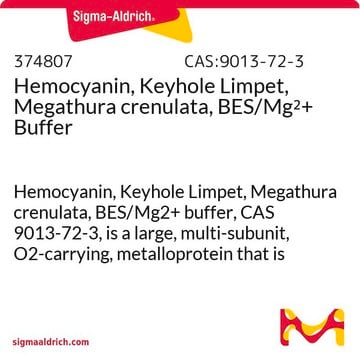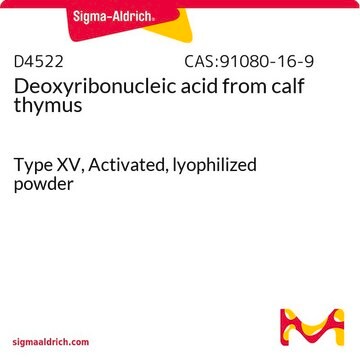H8283
Hemocyanin from Megathura crenulata (keyhole limpet)
PBS solution
Synonyme(s) :
KLH, Keyhole limpet hemocyanin
About This Item
Produits recommandés
Source biologique
Megathura crenulata
Niveau de qualité
Forme
PBS solution
Concentration
3.0-7.0 mg/mL protein (A280)
Teneur en cuivre
0.10-0.30% (based on protein)
Technique(s)
ELISA: suitable
Température de stockage
2-8°C
Vous recherchez des produits similaires ? Visite Guide de comparaison des produits
Description générale
Application
Hemocyanin was used to study if antipeptide antibodies specifically recognize the l1 protein of the human papilloma virus of type 31. It was also used to study the acid-induced unfolding of didecameric keyhole limpet hemocyanin.
Forme physique
Notes préparatoires
Code de la classe de stockage
10 - Combustible liquids
Classe de danger pour l'eau (WGK)
WGK 3
Point d'éclair (°F)
Not applicable
Point d'éclair (°C)
Not applicable
Certificats d'analyse (COA)
Recherchez un Certificats d'analyse (COA) en saisissant le numéro de lot du produit. Les numéros de lot figurent sur l'étiquette du produit après les mots "Lot" ou "Batch".
Déjà en possession de ce produit ?
Retrouvez la documentation relative aux produits que vous avez récemment achetés dans la Bibliothèque de documents.
Les clients ont également consulté
Notre équipe de scientifiques dispose d'une expérience dans tous les secteurs de la recherche, notamment en sciences de la vie, science des matériaux, synthèse chimique, chromatographie, analyse et dans de nombreux autres domaines..
Contacter notre Service technique
